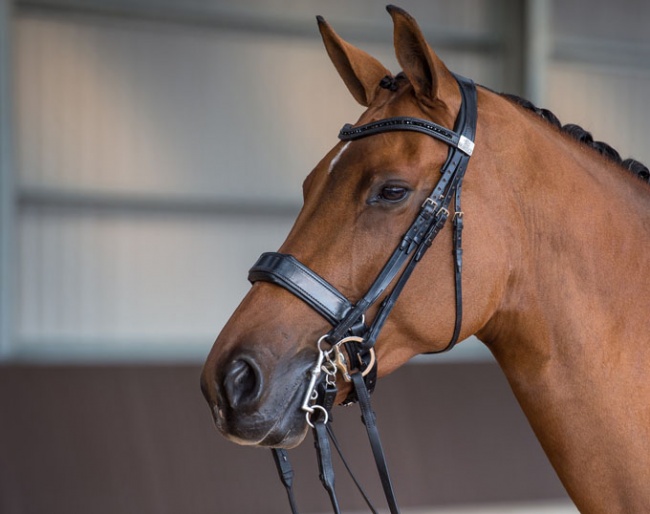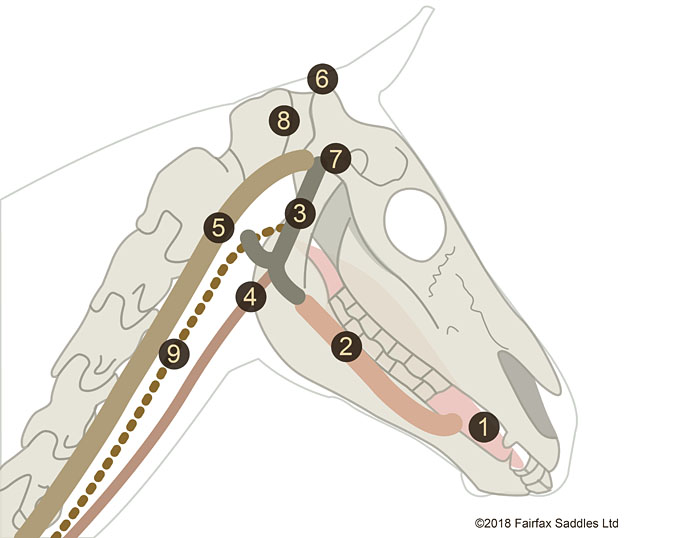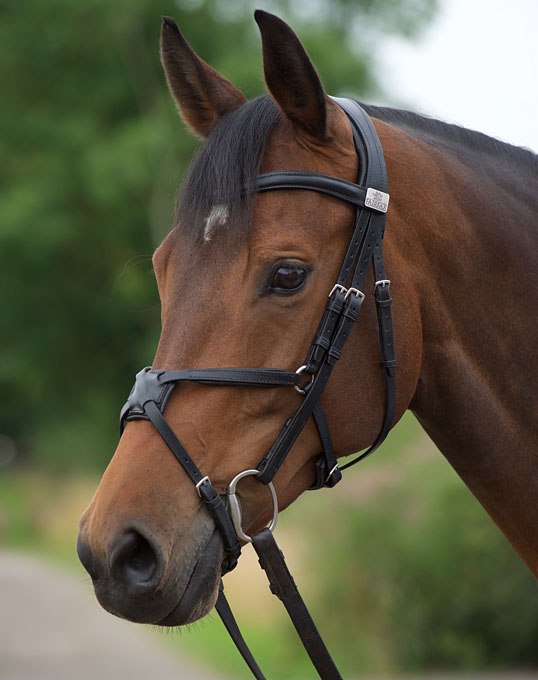
The Fairfax Performance Bridle has been granted two patents by the GB Patent Office, i.e. Patent: GB 2517150B & 2540305B
The granting of a patent in any country is recognition that the invention is unique, innovative and has never been seen before.
“To have one patent granted is testament to a company's innovation, but to have two on the same product is an achievement that makes us really proud,” says Vanessa Fairfax the bridle’s designer.
The Fairfax Performance Bridle is proven to improve the horse’s performance by allowing greater forelimb extension and increasing knee & hock flexion. A peer-reviewed scientific paper has been published in the Journal of Equine Veterinary Science, which validates the claims.
Fairfax’s patent application has been a five-year process, but it is important for the company because it protects the extensively-researched design from being copied.

One unexpected zone is under the headpiece below the base of both ears. Muscles that flex the head and neck, and protract the forelimb attach here. As the muscles work and expand, the pressure increases at the same point in each stride. In order to avoid this pressure, the horse may fix his head in a more comfortable position – this could be over-bent or with his nose stuck out.
Another (non-rider influenced) high-pressure zone is around the temporomandibular joint (TMJ). This is where the hyoid apparatus connects to the tongue and to two key muscles: the sternohyoideus, which runs to the breastbone (sternum) and the omohyoideus, which attaches to the shoulder blade (scapula) on each side.

The design reduces pressures over the area of attachments of muscles that flex the neck and bring the forelimb forward – freeing up the head and neck and allowing a bigger stride.
Unique pads each side of the headpiece remove the restriction to the TMJ, tongue and hyoid apparatus.
It should be no surprise that the horse can move his head and neck more freely, take a bigger stride, lift his withers and flex his hindlimbs more in a Fairfax Performance Bridle that does not create these pressure point.
To discover more about Fairfax Saddles and Bridles, visit www.fairfaxsaddles.com
Related Links
Fairfax Saddles Receives Queen's Award for Innovation
Team GBR Rider Spencer Wilton Launches His New Fairfax Saddle
Fairfax Classic Open Seat Dressage Saddle for Riders of More Shapes and Sizes
Fairfax Performance Girth Now Available in 20” Narrow
Fairfax Saddles Combine Science and Tradition
Fairfax Saddles Celebrates Success of its Scientifically-Proven Performance Panel
Fairfax Transit Headcollar, Designed for Horses Traveling
The Fairfax Rebecca Combines Exquisite Style with Scientific Success
Fairfax Performance Girths Stand Out by Science and Improved Horse Performance